My Dad had a triple bypass at age 45 so you can imagine what I was thinking.; it messed with my head. The doc insisted I take a minimum of two weeks off with absolutely no work. I went to a clinic the next day for a heart stress test and sent home with a holter monitor (heart and blood pressure thing)
Something happens to you when you have a health scare and realize it's been cause by the work that you hate doing. You immediately start taking stock and assess what steps you need to take to make it stop.
0 Comments
With Power Comes Great ResponsibilityMy hubby and I have this ongoing joke that I am a closet cape crusader. You see I stand up for good vs. evil and I even have recurring dreams where I leap out of my car to rescue someone from a car accident. Did you ever think of yourself as a super hero? Well I’m here to tell you, that just like every defender of the universe has unique powers, so do you!
All business leaders I’ve worked with have powerful influence over others as well as many other admirable traits. The fact is that each and every people leader brings special powers to the world; it just hasn’t been pointed out in that way! How To Get A PromotionEver wonder how your company’s President or senior decision makers decide on who to promote? Well, I’m going to reveal it to you today.
...It doesn’t have anything to do with how many additional hours you put in. ...It has no relation to how many lunch breaks you skip. ...And your late night email response rate has absolutely no bearing on the decision. It’s all about HOW you show up! Senior executive leaders are listening carefully to those reporting to them and are observing who gets acknowledged most frequently – and yes, HR partners are also providing them with insights regarding HOW people situations have been dealt with. Senior Execs are always on the lookout for future leaders who can make a positive impact. Of course the unique keys to being promotable may differ slightly from one organization to the next, but there are many elements that senior teams everywhere look at to determine who stands out above the rest. So, how do you get noticed in a sea of people? Let me share a few HR secrets for how to demonstrate YOU are the one to watch: Self-Doubt is DebilitatingTrue story - 20 years ago I didn’t feel worthy of a $25,000.00 salary!
After 9 years of raising our daughters, I began the difficult task to return to the workforce, was turned down for every job I applied to and told my skills were ‘out-of-date’. It felt horrible to be rejected, but what was worse was how I felt about myself. I remember sobbing to my husband ‘Who will ever pay ME $25,000 (the going rate) after being out of the workforce; all I am is a stay-at-home Mom!’ Have You Asked Yourself, Am I a Credible Leader?I heard about Tom through leaders in other departments and some of his team.
Tom was a top-level leader; he was sharp, rather humorous, a technically-adept-quick-study, and very good at corporate politics in his highly specialized C-suite role. However what Tom didn’t know, was that most of his team had lost total respect for him as a leader; they didn’t believe half of what he said and few trusted him anymore. As a result, team morale was at an all time low, they spent much of their time cross-checking the many stories he told, second-guessing his every move and gossiping about Tom’s life outside of work. Oprah Says Everyone Has a CallingWhen talking about success, Oprah Winfrey said "Everybody has a calling. And your real job in life is to figure out as soon as possible what that is, who you were meant to be, and to begin to honor that in the best way possible for yourself."
So how do you do that? When Work Sucks, You Need to GoTime to go – those words rang through my head when I caught up with a work-friend I hadn’t seen in years, as she told me about her job.
It all came back to me... the dreadful soul-sucking heaviness when my old job became absolute drudgery. Looking back, I knew in my heart it was time to go but I continued to persevere, pushing myself to do work that wasn’t ‘me’. I told myself that it was a good job with good pay so I’d be crazy to think about leaving …it even had a pension, and who leaves that at my age! That is her situation too; she is suffering in a job that no longer serves her and she feels so stuck. Getting Tough Feedback Can HurtI will never forget the first time I received tough feedback at work because lets face it, who can forget the moment when the are completely blindsided!
I was managing a government-funded employment centre at the time. While working on a tight deadline to implement a new computer system, I received quite a shock when the Director called me to come to her office ASAP. She told me my peer (Margaret, who I worked with every day) had raised a concern that needed to be addressed immediately. Margaret felt ‘intimidated’ by me and I made her... uncomfortable. Instantly I became defensive – WTF?! Why didn’t she talk to me, what did I do, where was this coming from? Me, are you kidding me… intimidating? According to Gallup State of the Global Workplace, 85% of employees worldwide are not engaged or are actively disengaged in their job. “The low percentages of engaged employees represent a barrier to creating high performing cultures around the world. They imply a stunning amount of wasted potential.” Wasted potential. How that phrase resonates with me! Death by Administration I'm sad to say, I was one of the walking ‘wasted potential’ not too many years ago. It was a dark and miserable time. My employer was doing a massive restructure, removing spans and levels of management and it was my job, as the HR lead, to implement it for my division. Unfortunately the process they undertook was more of a spreadsheet exercise, versus strategic. So the work I loved and excelled at suddenly switched from senior level advisory work to a massive load of mundane administrative tasks Every. Single. Day. , and it went on for months. This kind of work was my worst nightmare and even though it is hard to admit..I have never been very good at mind-numbing administrative work. It just wasn't the right work for me. What a complete waste! Wasted potential. People can’t thrive when they are doing the wrong work. It devalues them, misuses talents and creates unnecessary pressure. During stress-filled change, leaders can fall asleep at the helm; too busy ducking for cover, they completely overlook the signs of utter disengagement around them. Don’t waste your best resources like that; you will surely lose your highest potential people when you don’t pay attention.
Expert Lessons A great way to stem the tide of employee disengagement is to tap into the abilities of EACH and every person on your team. Get people doing the right work utilizing their best skills, long before a change occurs. According to Gallup's survey analytics it is your high potential talent that will take a walk if they are not engaged, long before the others. These top talent are the experts to learn from! Here is what top talent say will help keep them: Lesson 1
Lesson 7
Engagement Counts The best leaders demonstrate they care about each and every team member by taking an interest. They pay attention, particularly during stressful times, leveraging potential vs wasting it. They make it a practice to develop potential, all the time. They allocate work in a way that plays to their people’s strength and they keep them connected to the bigger picture. When you demonstrate YOUR engagement, harnessing the potential of your best and brightest, you are guaranteed better results for highly engaged employees. If you have a disengaged team (or team member) or are leading through stressful times and need support, I’m only an email away! I help leaders grow and develop by working with them through the toughest of times. I offer a 30-minute free consult. I want to hear from you, tell me about your own experience in the reply section below. Image: CC0 Creative Commons/Pixabay
Last month we focused on the letter “S” – Steadiness of the DiSC behavioural style.
This month concludes the Style Talk Series as we focus on the profile “C” – Conscientious characteristics. You may also like to review the first two parts of the series focusing on the profile "D"- Dominance, or focusing on the profile "I"- Influence. As previously mentioned, in each article I am highlighting real-life clients who tend to illustrate a strong profile of just one of the DiSC behavioural traits. You will have different degrees of each behavioural style in your own profile but you tend to have a dominant style that many at your work will witness. How you behave compared to people with differing styles to you may be quite different, even when presented with the very same scenario. Meet Nadeem (not his real name) Nadeem is an Accounting Advisory Executive with a leading professional services firm. Nadeem has traveled the world, offering advice on accounting and risk management for 15+ years and is considered a leader in this field. Nadeem has led large, matrixed teams, working on highly complex projects with large multi national corporations providing advice and guidance on Accounting and Tax.
We have identified for Nadeem that he needs to pick up on social cues and demonstrate interest in others. This includes taking a brief time in the first part meetings to greet people and chat for a moment, assess his audience then communicate in a way the other party feels valued. Nadeems’s development plan includes coaching on relationship building. Some areas include meeting preparation; helping him to assess the people he will meet so he is more prepared to make the right first impression. Also we are doing DiSC assessments with each of his direct team to help him decode their styles. Lastly he is working with an internal mentor who has the exact opposite style to his so they can learn to appreciate their differences. In future this will arm him for analyzing people and provide a roadmap for flexing his communication style accordingly. Do you know anyone like Nadeem? Or can you see yourself in his profile? He is a good representative of a strong “C” behavioural style. Can you imagine how it may benefit to you to better understand your own DiSC style and how your style may impact others? Once you see how your style affects people you work with, you can adapt accordingly. Likewise as you leverage team dynamics using DiSC assessment, you can find ways to pair people for the best outcomes as well as anticipate where friction may occur. Do you want your own DiSC Assessment? Email me to reveal the secrets of success. Everything DiSC Workplace® assessment is a great tool to use with your whole team. This assessment will decode how best to communicate for your own success. It makes a great foundational piece for business planning, improving employee engagement and team development. Not only will you receive a detailed report but I will also provide a confidential debrief that delves into your personal profile and/or team dynamic. Drop me a line when you’re ready to learn more about yourself and discuss potential career/leadership derailers so you know how to head them off! Last month we focused on the letter “I” – Influence of the DiSC behavioural style and previously we focused on the “D”.
This month we will continue the Style Talk Series focusing on the profile “S” – Steadiness behaviours and communication characteristics. As I mentioned before, the clients I highlight tend to be symbolic of a strong profile of just one of the DiSC behavioural dimensions, this month using the “S”. In your own DiSC profile you will have differing degrees of each behavioural style. That said, people at work likely have observed your most predominant one because when you are under pressure your most dominant style usually shows up. There is no perfect style, no right or wrong either; just like people are from different backgrounds, we each view a situation and react uniquely because we are approaching it from a different vantage point. This series is to help introduce the benefits of understanding your style. Meet Melissa (not her real name) Melissa is a Senior level Human Resource Business Partner for a global financial institution. Melissa has been in HR (different departments) for most of her 20+ career. She currently supports over 40 executives (various levels) who collectively have over 2000 employees. Her day-to-day work is strategic, focused on providing business executives’ HR advice, shaping and implementing strategic plans. Melissa is keen to be promoted to VP level.
We have identified that for Melissa to move up, she needs to command more authority. Colleagues, leadership and clients enjoy working with her but to be ready for the next move she has to prove she can manage conflict directly and comfortably. Showing she can stand her ground and be more direct in her communications will give senior leaders more confidence in her capabilities at the next level. Melissa’s development plan includes coaching courageous confrontation, role-playing in a safe environment using real-life scenarios and critiquing conversations. Through routine practice she will develop comfort in finding her voice, without sacrificing her strong values for harmony. Do you know anyone like Melissa? Or can you see yourself in her profile? She is a good representative of a strong “S” behavioural DiSC style. Imagine the benefit to you to better understand your own DiSC style and how you impact other people? Once you see how your style affects people you work with, you can modify appropriately. Likewise when your team uses DiSC assessment as a development tool, you will better understand the dynamic of everyone within the team. Some people may be a lot like you when others are not, you will see how to get the best out of everyone when you learn how to communicate to their style. Time for your own DiSC Assessment? Email me to reveal the secrets of success. Everything DiSC Workplace® assessment is a great tool to use with your whole team. This assessment will decode how best to communicate for your own success. It makes a great foundational piece for business planning, improving employee engagement and team development. Not only will you receive a detailed report but I will also provide a confidential debrief where we will into your personal profile and/or team dynamic. Drop me a line when you’re ready to learn more about yourself and discuss potential career/leadership de-railers so you know how to head them off! Last month we focused on the letter “D” – Dominance of the DiSC behavioural styles.
This month we will continue the Style Talk Series focusing on the profile “I” for Influence behaviours and communication style. I personally relate most with this dimension myself, though not quite to the same extreme as my client. As you will see, the client I am highlighting tends to be emblematic of a strong “I” profile which is just one of the DiSC behavioural traits. You will have varying degrees of each behavioural style in your own profile but we all have our ‘go to’ dominant style that others tend to see, particularly under stress. Two people may react quite differently when presented with the same situation, depending on their dominant behavioural style. Meet Daniel (not his real name) Daniel is a Senior Vice President for a national Sales organization that employs 4000+ people across Canada. Daniel worked his way up to a senior level over 18 years of progressive moves. He joined the company directly from University, when he began as an intern in Customer Operations gathering customer information from clients to prepare for year 2000 cut over.
For Daniel to continue to move up in the organization he must take more time to consider data and facts; use solid supporting evidence to help formulate decisions, and incorporate facts into his narrative. He is seen as a promotable resource for the business, he may be considered for President or CEO of a smaller division in the future. Daniel’s development plan includes an executive coach (external) as well as internal mentorship from the CFO, who is giving him guidance and support to develop data-driven decision making. Do you know anyone like Daniel? Or do you see yourself in his profile? He is a good representative of a strong “I” behavioural style. Can you imagine the benefit to better understand your own DiSC style and how you may impact others? Once you grasp how your style affects people you work with, you adapt accordingly. Likewise as you build a team, you can better understand the dynamic of everyone within the team. Some may strike sparks with you, yet they bring tremendous benefit overall when you learn how to communicate to their style. Time for Your Own DiSC Assessment? Email me to take advantage of the insightful perspective of Everything DiSC Workplace® assessment or to arrange a session with your whole team. This assessment will decode how best to communicate for your own success. Not only will you receive a detailed report but I will also provide a confidential debrief where we will delve into your personal profile and/or team dynamic. Drop me a note when you’re ready to learn more about yourself and discuss potential career/leadership de-railers so you know how to head them off! Ever work with someone whose style drove you crazy? Perhaps they talked too slow or fast for you, were overly demanding or passive, very logical or maybe they talked so much about feelings and relationships to the point it made it difficult to get down to business? The list of bugaboos vary because what bugs one person, may not bother another to the same degree.
We each have a unique combination of behaviours and priorities; they show up as our style to others. When you work with someone whose blend is quite different to yours, they will likely strike a nerve - when you're not well-armed to understand where they are coming from. Assess for Your Own ‘Ah Ha!’ Moment One way to ease this kind of discord is to conduct an assessment that decodes both you and your team’s behavioural styles. A tool to understand clear preferences and what they prioritize compared to you. My tool of choice is a DiSC® model behavioural assessment tool – Everything DiSC®Workplace by Wiley Brand. It's simple, yet uncovers ‘pinch points’ quickly with leaders and/or their teams so they can adjust immediately. This tool works for building better cohesion in a team, improving communication, reducing tensions, but also offers self-awareness for leaders I coach, most of whom have a few ‘ah ha’ moments as a result! Over the next series I highlight each one of the four dimensions of DiSC® characterized by people I’ve worked with (names changed, of course) quick links below: DiSC®Background Harvard psychologist Dr. William Moulton Marston created the theory of DISC® in the 1920’s, illustrating that people exhibited emotions through four ‘Normal’ behaviours of Dominance, Inducement, Steadiness, or Compliance – aka DISC® In the 1950’s an industrial psychologist named Walter Clarke went on to create the first assessment using the DISC behaviours Marston founded. Over the years the assessment has been improved and updated but the principles remain the same. Today we use the terms: Dominance, Influence, Steadiness and Conscientious in the assessment. First lets start with the profile of “D” – Dominance. Meet Belinda (not her real name) Belinda is a Vice President in a Customer Service group (Canada) of a large multi national company. She moved up through the ranks fairly fast. Here are some of her traits and behaviours that demonstrate a strong “D” profile:
Do you know someone like Belinda? Or can you see a little of yourself in her profile? She is a good representative of a strong “D” behavioural style. Most of us have behavioural styles with varying degrees of each of the 4 DiSC® dimensions so certain circumstances may bring your “D” more to the forefront. For Belinda to be considered for future, more senior level roles she must make an effort to develop work relationships by recognizing the opinions, feelings and ideas from others. Taking time to get to know people versus putting them to work. Without some coaching, guidance and support from others, Belinda’s trajectory in a large multinational company will surely be hampered. Much of her advancement will depend on whom she reports to and whether she reigns in her power punches! Can you see the benefit to you to better understand your own DiSC® style and how you may impact others? Or to decode your team members so you can find the right way to communicate with them? Get Your DiSC® Assessment! Email or call me to take advantage of the eye-opening perspective of Everything DiSC® Workplace assessment or to arrange a session with your whole team. This assessment will surely provide a clearer understanding of how you affect others and decode how best to communicate for your own success. Not only will you receive a detailed report but you will also have a confidential debrief with me where we will delve into your personal profile and/or team dynamic. Call or email me when you’re ready to learn more about yourself and discuss potential career/leadership de-railers so you know how to head them off! It could be you’ve heard of others being let go; you’ve seen a shake up at the top leadership levels or you suspect your new boss is really here to restructure. Any of these scenarios can make you uneasy about your own job stability. And once the anxiety sets in, it can affect your normal ability to focus, make you dread every unexpected meeting or just make getting up to go to work, feel miserable. Given the percentage of our life we spend at work, this ongoing negative stress can be bad for your health so it is worth finding productive techniques to take back control. If you are one of those people sensing impending doom, I’m here to say relax, don’t let it unnerve you. Instead let me show you how to actually take full advantage of it. While I can’t guarantee you won’t be on the chopping block, I can help you reframe your mindset and give you hope for a much more positive outlook. Simply by learning how to Duck, Prepare to 'Jet' and/or get ready to make a Career Pivot!
Duck! Here is how ‘Duck’ worked for one of my corporate clients: I’ll call her Eileen; Eileen had a new boss, a bossy boss with a big ego, who she didn’t see eye-to-eye with. My advice was this - get on with the work, don’t act in an artificial way, just keep the focus on doing a good job. It wasn’t always easy. Eileen asked clarifying questions to understand what her boss wanted and then delivered accordingly. She gave the boss no cause to centre her out, no angry or emotional outbursts – she kept her head down and managed her emotions. (We would often debrief after the tough days). We found that when she focused on only what her manager asked for, it became much easier for her to cope day-to-day. This gave her personal control. She controlled her reaction, her output, and her thoughts. The goal was to deliver, and deliver she did! Only those close to her ever knew the true feelings of doubt and worry. She is a great example of how positively shifting your state of mind gives you the ability to work through job stress. She proved to me that anyone could overcome the dread just by changing your mindset! This concept not only reduced stress for few years until the boss moved on, but she said it taught her to become more focused and action oriented. Every Exit is an Entry Somewhere The other strategy is to get ready to 'jet' (aka. leave, exit, vamoose, hit the road). This means ACCEPT that you are going to go, stop worrying about it and begin your own transition now…while you’re still working! I always tell my clients “you have the gift of time so lets use it to your own benefit.” Think of it as extra paid time to regroup, plan and prepare for your next move. Here are some action steps I suggest to create change, on your own terms:
Create an action list with target dates to be done by:
This mind shift is a game changer to overcome the oppressive feeling of dread. You invest in yourself and take back some time. If all goes really well, you’ll receive a nice little severance package AND start your new job shortly thereafter. Or you may land a great job before they send you packing – either way is a positive outcome! Consider a PIVOT! Treat this as a defining moment in your career where you sit back, take stock and re-evaluate what YOU want for your future. It’s the perfect time to consider an intentional career change in a completely different direction! Maybe there are departments you’ve had a yearning to join but never had the courage to apply? Perhaps you may have been thinking of starting your own business, or you’ve had a side hustle that you should consider if you can do it full-time? I’ve had clients take this opportunity to plan to return to school, become certified in a speciality or finish higher level education that later jettisoned them on to a successful new chapter in their life. Regardless of where the pivotal change takes you it usually needs a catalyst to push you over the edge and make that wishful change happen. Turning the dread into a meaningful plan can make all the difference. Need a Career Lifeline? I’ve supported several leaders through this uncertainty, waiting for the day they will be let go. I’ve also sat on the other side, breaking the news of downsizing to quite a few people and I can say with 100% confidence that everyone finds a new path and 9.8/10 times they end up happier than before. Rather than let the worry drag you down or make you sick, I say shift your thinking to make it work for you! The big trick is finding ways to take back control, accept change quickly – better yet, embrace it! If you find yourself stuck and want to work with a professional to review your options, create a personalized career plan, hold you accountable or give you candid feedback, advice and insight, give me a call or send me an email! I offer a 30-minute free consultation. Regardless of the scenario that has you anxious or worrying about job loss, I’d love to help you ‘connect the dots’ for the next phase in your career! Image: CC0 Creative Commons
Sitting together at a big oak table, in her spacious corner office on the 24th floor overlooking Bay and Wellington Streets in Toronto, my well-respected client asked me to help her map out the next steps in her career. She felt stuck; almost embarrassed that she was misaligned to her career after all it took to get there. Proof that even when you reach the coveted C-suite, you can still feel discontented or unfulfilled in your job. Most people associate their sense of self and identity with the work they do and paycheque they make. You can see how difficult it would be to determine where to make the next move when you find yourself in this situation. Where to Begin I often suggest watching a TED Talk by Adam Leipzig, called How to Learn Your Life's Purpose in 5 Minutes. One of most popular TED Talks of all time, with more than 8.5 million views. In less than 10 minutes Adam provides 5 key questions to help identify your life’s purpose. It’s a great start to expanding your view on what you should do to give you fulfillment. I use a variety of introspective tools as well as questioning techniques with my clients. If you feel stuck, or in a fog you’ll find a snippet of questions below that can begin to clear your view. This reflective exercise activates ideas, narrowing in on clues you can use to reimagine a more rewarding career or job. Your Calling Many of us are forced to make life-long choices selecting education specialties or career direction with minimal information about who we are and what we are best at. Seldom are we given tools to help identify what path to take. Caught up in the tsunami of life and career, it sweeps you along without much time for reflection. In fact, sometimes it takes years of doing the wrong thing before it really dawns on you that you’re way off base! Few can afford to leave their job to experiment and dabble in other fields to figure out where the right place is; instead you need a solid plan with a process to follow. What I’ve found best is to carve out time for self-reflection and introspection. Then seek feedback and dig into your strengths, doing this opens you up to connect with your calling. YOUR CALLING = the intersection between doing what you love and the ability to make money doing it! Who AM I Really? The answer to the right place for most people is typically tied to who they are and have always been. There are trails of evidence that you can relate to when you go through this exercise. Similar to Adam’s Ted Talk these questions help you uncover what you’re meant to do.
Connect the Dots While it seems a simple exercise, this reflection actually takes work to gather and time to contact and listen to as many people as you can. It is vital that you remain open to hear feedback without judgement. Take notes, ask clarifying questions and avoid judging or defending. I always say feedback is a gift! So just accept whatever points people share and say thank you, graciously. Armed with this information, you will find some obvious clues to connect the dots for what you are meant to be doing. The key to success in the future lies in leveraging your very best traits and skills while focusing on areas you’ve had the most enjoyment and impact to others. Impact to others is a crucial piece of data few ever collect. Service to others, or making a positive impact is a critical building block to most people’s work contentment. From here brainstorm, look at what you can change in your current job to better align with your purpose. But also look for project work, roles, departments, or other industries and your network for potential opportunities to consider. The path isn’t always immediately obvious. Some people stay within their job working on the side with charities, volunteering or mentoring others or contributing to the greater good in other ways. Craft an action plan to network further, identify potential jobs that leverage what you’ve done so far, look at independent work or other businesses where you can fully utilize all that makes you unique. If you find yourself struggling in a job that leaves you feeling undervalued, and want assistance from a leadership coach to help guide you , provide feedback and gain clarity with accountability to follow through, please send me an email! Or if you’d like to delve deeper into who you are and what makes you tick, please reach out. It would be a privilege for me to help you find work you love! Photo: Creative Commons Zero (CC0) license
|
Most Popular Posts:
AuthorElaine Adamson is a leadership consultant with Dots Leadership Solutions Inc. A natural dot connector. Passionate about coaching team effectiveness and leadership development she shares over 25+ years of real-life tips and tricks that really work! 
Elaine believes you can discover and leverage strengths to forge a strong team dynamic despite business challenges or organizational change.
She posts some great articles on Linked In too! Topics of Interest
All
Archives By Date
November 2022
|
Specialties |
Company |
|


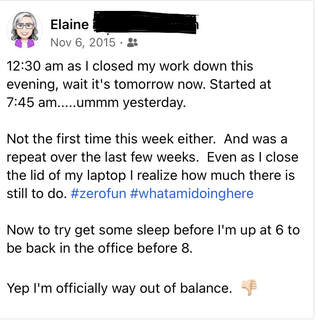



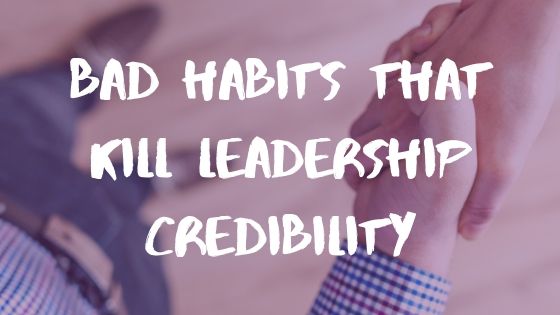
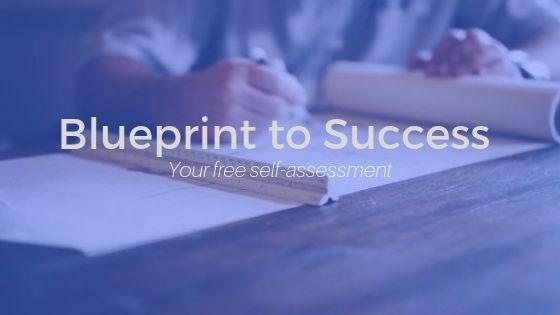




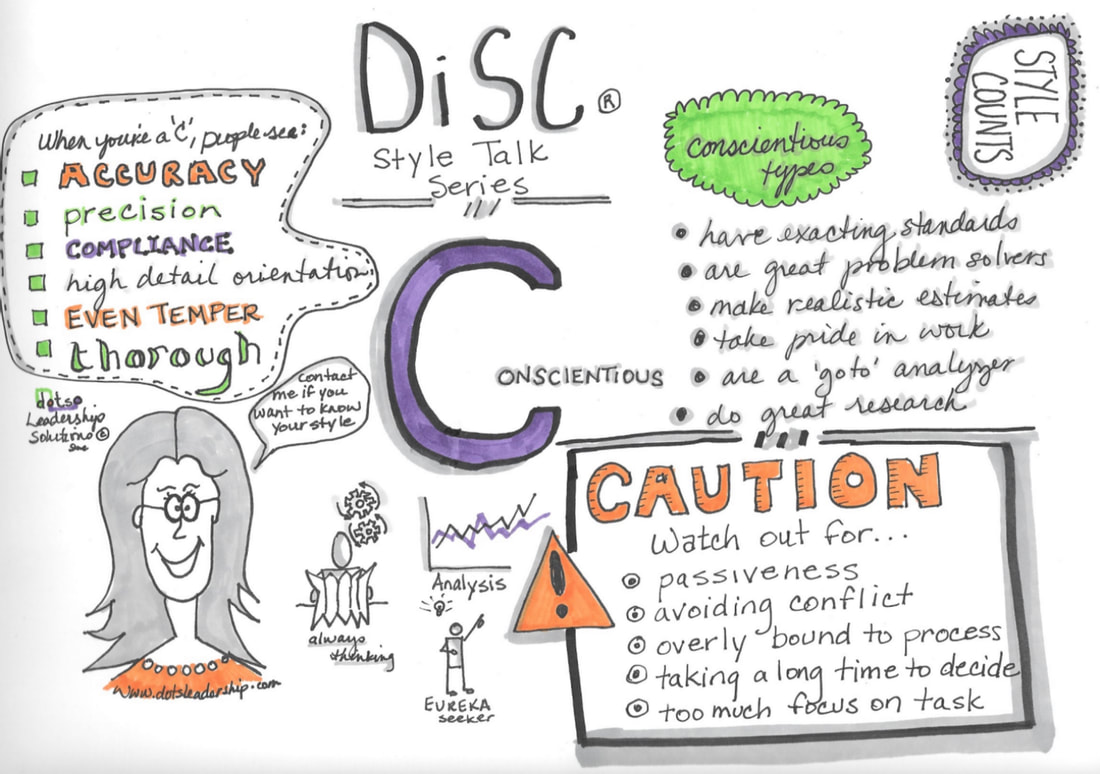
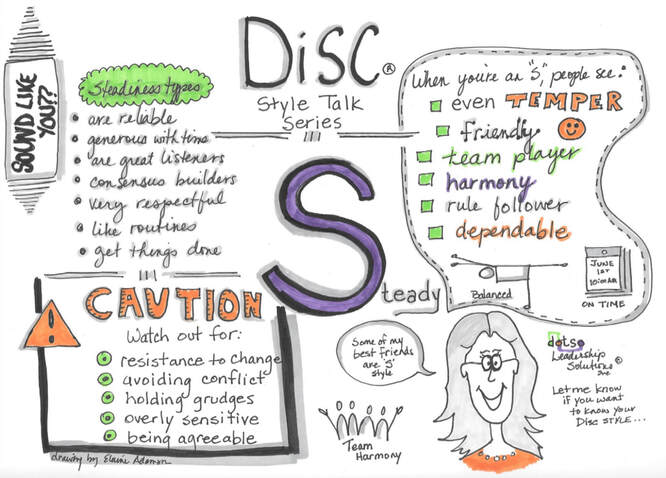
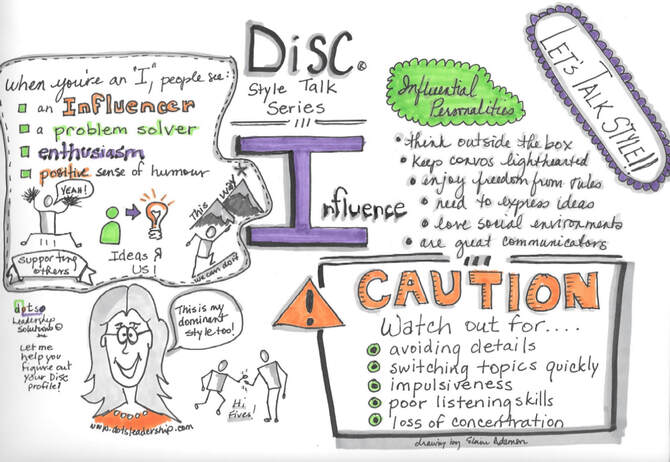



 RSS Feed
RSS Feed